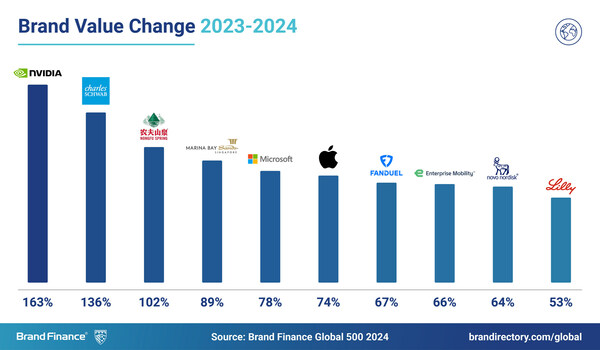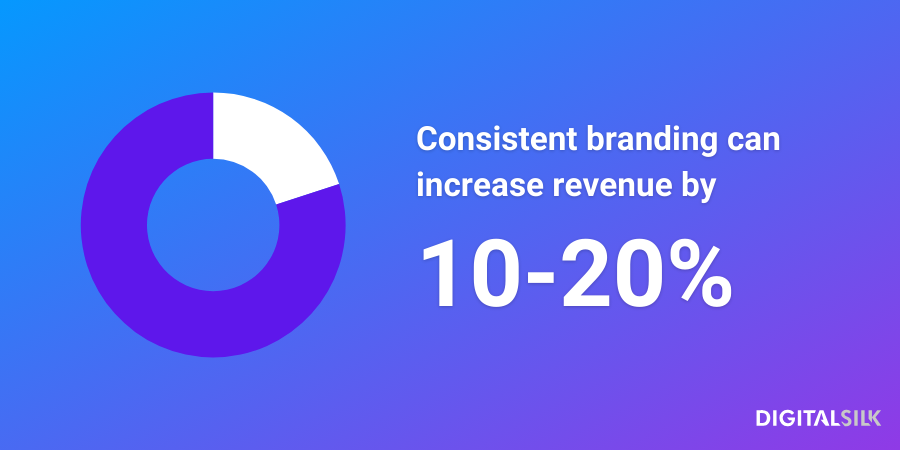
Have you ever walked into a store and been drawn to a product, not just because of its features or price, but because of the brand behind it? This instinctual pull is the power of brand value — a force that transcends mere recognition and taps into the trust, loyalty, and perception that an organization has cultivated over time.
In a market where standing out is essential, brand value serves as a critical asset that can significantly influence a company’s trajectory. Companies with strong brand value can command premium prices, foster deep customer loyalty, and even attract top talent. But what exactly is brand value, and how can businesses measure something that often feels intangible?
In this article, we’ll explore the concept of brand value, why it matters, and the methods you can use to measure and enhance it effectively. Understanding it is essential for laying the foundation for long-term success.
What Is Brand Value?
Brand value is the perception of a organization in the minds of consumers, stakeholders, and the market at large. It goes beyond logos and slogans, representing the sum total of what a company stands for, how it is perceived, and the emotional connection it creates with its audience.
Several components contribute to this element:
-
Brand Perception: This is how consumers view the brand, influenced by their experiences, marketing messages, and public opinion. A positive perception can lead to increased brand loyalty and a stronger market position.
-
Customer Loyalty: Loyal customers are often willing to pay a premium for a brand they trust, which directly contributes to its value. This loyalty is built over time through consistent quality, reliable customer service, and positive experiences.
-
Market Position: A brand’s standing within its industry also affects its value. Brands that are leaders in their market, or that are seen as innovative or trend-setting, typically enjoy higher brand value.
Ultimately, it is the intangible yet impactful force that drives consumer choices, influences market trends, and shapes a brand’s reputation. Understanding what contributes to this value is the first step in harnessing its power.
Why Is Brand Value Important?
Brand value plays a crucial role in a company’s ability to thrive and grow. Here’s why it matters:
Impact on Customer Loyalty and Retention
Brands with high value cultivate strong relationships with their customers, leading to greater loyalty and higher retention rates. When customers feel a strong connection to a brand, they’re more likely to continue purchasing from it, even in the face of competition.
Influence on Pricing Power
A brand with strong value can command higher prices because customers perceive it as offering greater quality, trust, or prestige. This pricing power allows companies to maintain healthy profit margins, even in competitive markets.
A recent report highlights that brands capable of justifying higher prices due to strong brand equity grew their brand value by 67% over the last four years. This demonstrates how robust value not only allows for premium pricing, but also supports sustained growth even in volatile markets.
Market Leadership and Financial Success
Strong brand value can significantly enhance a company’s market position and financial performance.
For example, according to Brand Finance’s Global 500 report for 2024, Apple experienced a remarkable 74% growth in brand value, reaching $517 billion, making it the most valuable brand in the world.
This underscores the significance of brand value as a driver of market leadership and financial success.
Attraction of Talent and Partnerships
A strong brand doesn’t just appeal to customers — it also attracts top talent and valuable partnerships. Companies with high brand value are often seen as desirable places to work, and potential partners are more likely to seek collaborations with brands that have a solid reputation.
How Can You Measure Brand Value?
Measuring it can seem like a daunting task, especially since it encompasses both tangible and intangible elements. However, there are several key metrics and approaches that can help quantify this important asset:
Net Promoter Score (NPS)
NPS is a popular metric that gauges customer loyalty by asking one simple question: “How likely are you to recommend our brand to a friend or colleague?” The responses are then used to categorize customers as promoters, passives, or detractors. A higher NPS indicates a strong brand value, as it reflects positive customer experiences and high levels of satisfaction.
Customer Lifetime Value (CLV)
CLV measures the total revenue a company can expect from a single customer over the duration of their relationship. A higher CLV suggests that customers are not only loyal but are also willing to spend more over time, which directly correlates with a higher brand value.
Brand Equity Surveys
These surveys assess consumer perceptions of a brand by asking questions about brand awareness, perceived quality, and emotional connection. The insights gathered from these surveys can provide a comprehensive view of how a brand is perceived in the market.
Market Share Analysis
By analyzing a brand’s share of the market compared to its competitors, businesses can gauge their relative strength and value. A larger market share often indicates a higher value, as it suggests that the company is preferred by more consumers.
Qualitative vs. Quantitative Measurement
It’s important to balance both qualitative and quantitative approaches when measuring brand value. While metrics like NPS and CLV provide hard numbers, qualitative insights, such as customer testimonials and brand sentiment analysis, offer a deeper understanding of the brand’s emotional impact. Together, these methods provide a well-rounded picture of brand value.
Enhancing Brand Value With Effective Brand Management
Maintaining and enhancing brand value requires consistent effort and strategic brand management. Here are some key practices that contribute to a strong and valuable brand:
The Role of Consistent Branding
Consistency across all touch points — whether it’s marketing materials, customer service, or product quality — is crucial for building and maintaining brand value.
Consistent presentation across all platforms can increase revenue by up to 10-20%, highlighting the financial impact of maintaining strong brand consistency as a key component of brand value.
When consumers encounter the same message and experience at every interaction, it reinforces their trust and loyalty to the brand.
Creative Asset Management
Organizations that can efficiently organize, access, and distribute their visual and digital assets maintain a more cohesive and professional image. This not only saves time and resources, but also ensures that all brand communications are aligned with the core values and messaging.
Adapting to Market Changes
Brand value isn’t static — it can fluctuate based on market conditions, consumer preferences, and competitive actions. Staying agile and being able to adapt to changes in the market is essential for protecting and growing an organization’s worth. This could involve updating messaging, refreshing visual identities, or expanding into new markets.
Embrace Brand Value Today With Lytho
Measuring and managing brand value is crucial for sustaining a strong market presence and fostering customer loyalty. By focusing on consistency and strategic management, businesses can enhance their value, ensuring long-term success and growth.
Ready to elevate your brand’s value? Explore how Lytho’s creative management solutions can help you measure, manage, and enhance your brand value with ease. Schedule a demo today to see how our tools can drive consistency and strengthen your brand identity.
Do you want to give yourself and your creative team more room for creative stimulation by automating the boring stuff? Lytho helps you streamline your entire workflow and harmonize all brand collateral under a single, uniform platform. Feel free to reach out to us by scheduling a demo and learning how our creative solutions can boost the effectiveness of your creative projects. We look forward to speaking with you!

Ready to simplify your creative operations and start having a little fun at work again? Schedule time to talk with us.
Let us show you how Lytho’s Creative Operations Platform helps in-house creative and marketing teams do better work, ease the stakeholder experience, and stay on brand.
Schedule a Demo posted by
posted by 
